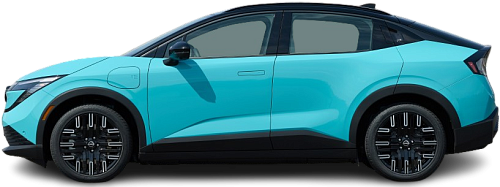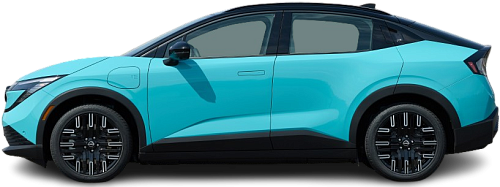USA EV Comparison: Nissan Leaf 52 kWh vs Leaf 75 kWh
Struggling to Decide? Let AI Help!
Your AI Summary Is Ready!
General Info
Both vehicles have been announced, but are not yet in production. Both cars are expected to be sold in the United States.
The two vehicles share the same body style: SUV.
| Property | Nissan Leaf 52 kWh | Nissan Leaf 75 kWh |
|---|---|---|
| Years of Production | 2025-… | 2025-… |
| Current Status | Announced | Announced |
| Country of Manufacture | Japan, UK, USA | Japan, UK, USA |
| Body Style | SUV | SUV |
| Market Availability | EU, USA | EU, USA |
| Price USA (New) | $35000 | $37000 |
| GCC Score | 5.6 | 5.9 |
Range and Efficiency
While the Nissan Leaf 75 kWh (2025-…) offers a longer real-world range and a bigger battery, it is less energy-efficient than the Nissan Leaf 52 kWh (2025-…).
| Property | Nissan Leaf 52 kWh | Nissan Leaf 75 kWh |
|---|---|---|
| Range (EPA) | 250 mi | 303 mi |
| Range (GCC) | 237 mi | 288 mi |
| Battery Capacity (Nominal) | 52 kWh | 75 kWh |
| Battery Capacity (Usable) | 49.4 kWh | 71.2 kWh |
| Efficiency per 100 mi | 20.8 kWh/100 mi | 24.7 kWh/100 mi |
| Efficiency per kWh | 4.8 mi/kWh | 4.04 mi/kWh |
| Range and Efficiency Score | 8.1 | 8.4 |
Charging
Both vehicles utilize a standard 400-volt architecture.
Both vehicles support DC fast charging with a maximum power of 150 kW.
Both vehicles are equipped with the same on-board charger, supporting a maximum AC charging power of 7.2 kW.
| Property | Nissan Leaf 52 kWh | Nissan Leaf 75 kWh |
|---|---|---|
| Max Charging Power (AC) | 7.2 kW | 7.2 kW |
| Max Charging Power (DC) | 150 kW | 150 kW |
| Architecture | 400 V | 400 V |
| Charge Port | Tesla (NACS) | Tesla (NACS) |
| Charging Score | 4.6 | 5.1 |
Performance
Both vehicles are front-wheel drive.
The Nissan Leaf 75 kWh (2025-…) boasts greater motor power and accelerates faster from 0 to 60 mph.
| Property | Nissan Leaf 52 kWh | Nissan Leaf 75 kWh |
|---|---|---|
| Drive Type | FWD | FWD |
| Motor Type | PMSM | PMSM |
| Motor Power (kW) | 130 kW | 160 kW |
| Motor Power (hp) | 174 hp | 214 hp |
| Motor Torque | 254 lb-ft | 261 lb-ft |
| 0-60 mph | 7.2 s | 6.8 s |
| Top Speed | 90 mph | 106 mph |
| Performance Score | 3.3 | 3.7 |
Dimensions
The Nissan Leaf 52 kWh (2025-…) and Nissan Leaf 75 kWh (2025-…) are about the same size.
Both models have similar wheelbase lengths.
| Property | Nissan Leaf 52 kWh | Nissan Leaf 75 kWh |
|---|---|---|
| Length | 173.4 in | 173.4 in |
| Width (with Mirrors) | 82.6 in | 82.6 in |
| Width (w/o Mirrors) | 71.3 in | 71.3 in |
| Height | 61.3 in | 61.3 in |
| Wheelbase | 105.9 in | 105.9 in |
Cargo and Towing
Both models provide equal trunk space and the same total cargo volume when the rear seats are folded.
Neither car is equipped with a frunk (front trunk).
Neither vehicle is officially rated for towing in the US.
| Property | Nissan Leaf 52 kWh | Nissan Leaf 75 kWh |
|---|---|---|
| Number of Seats | 5 | 5 |
| Curb Weight | 3955 lb | 4187 lb |
| Cargo Volume (Trunk) | 20 ft3 | 20 ft3 |
| Cargo Volume (Max) | 55.5 ft3 | 55.5 ft3 |
| Cargo Volume (Frunk) | - Cargo Volume (Frunk) | - Cargo Volume (Frunk) |
| Cargo and Towing Score | 5.8 | 5.8 |




